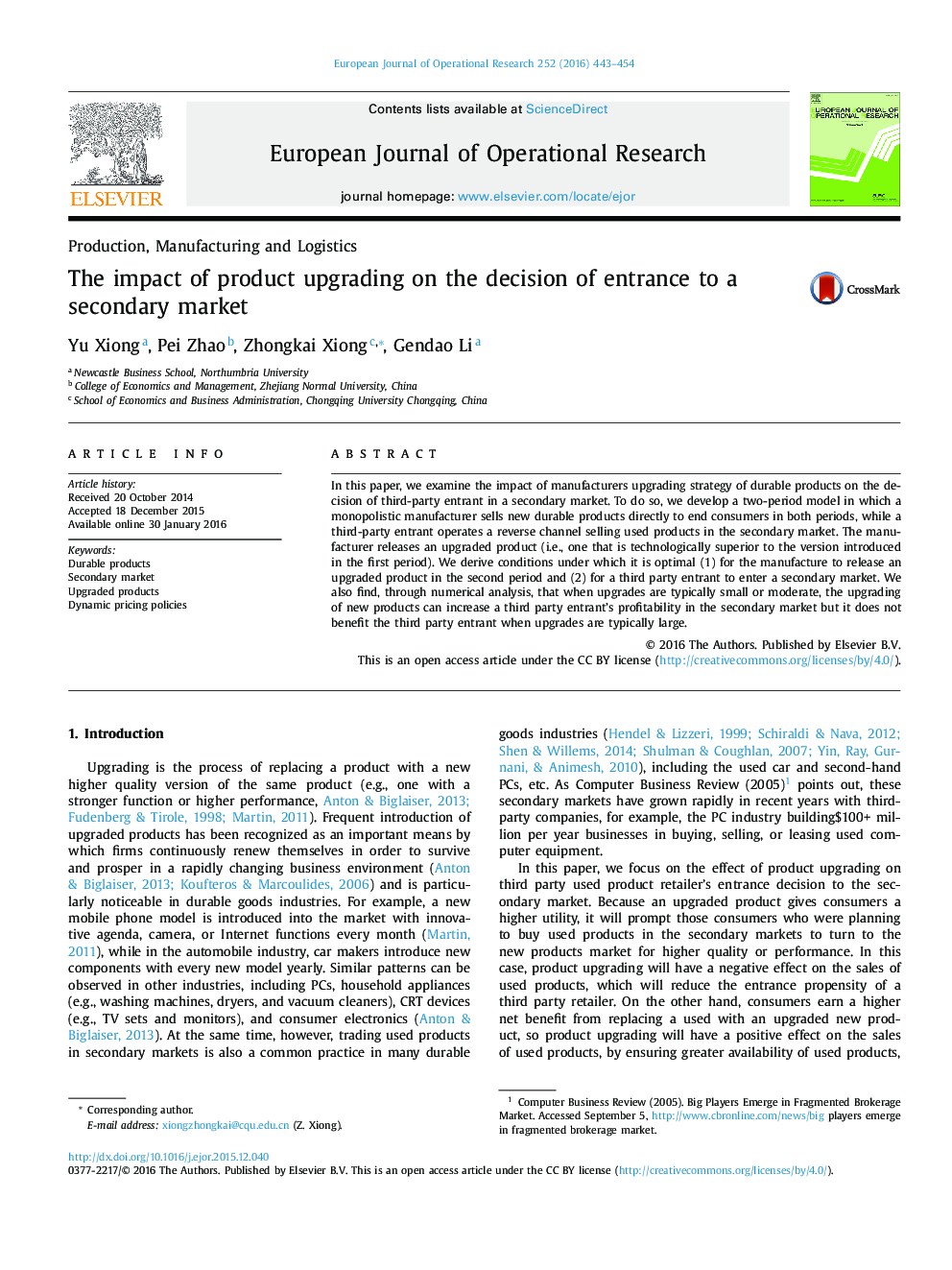| Article ID | Journal | Published Year | Pages | File Type |
|---|---|---|---|---|
| 6895703 | European Journal of Operational Research | 2016 | 12 Pages |
Abstract
In this paper, we examine the impact of manufacturers upgrading strategy of durable products on the decision of third-party entrant in a secondary market. To do so, we develop a two-period model in which a monopolistic manufacturer sells new durable products directly to end consumers in both periods, while a third-party entrant operates a reverse channel selling used products in the secondary market. The manufacturer releases an upgraded product (i.e., one that is technologically superior to the version introduced in the first period). We derive conditions under which it is optimal (1) for the manufacture to release an upgraded product in the second period and (2) for a third party entrant to enter a secondary market. We also find, through numerical analysis, that when upgrades are typically small or moderate, the upgrading of new products can increase a third party entrant's profitability in the secondary market but it does not benefit the third party entrant when upgrades are typically large.
Keywords
Related Topics
Physical Sciences and Engineering
Computer Science
Computer Science (General)
Authors
Yu Xiong, Pei Zhao, Zhongkai Xiong, Gendao Li,
